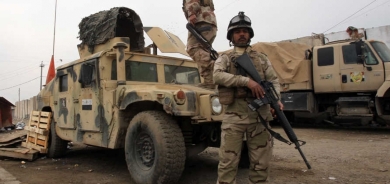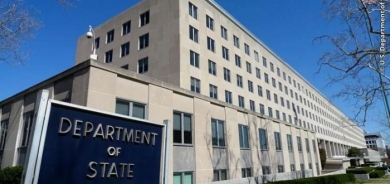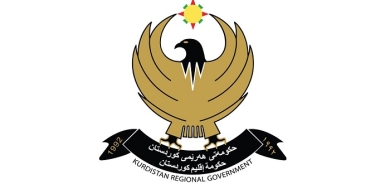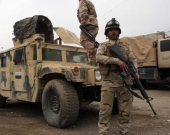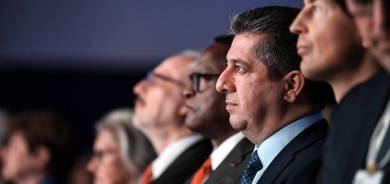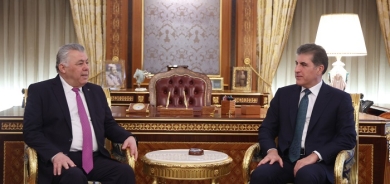Thousands of Iraq's Yazidi Refugees Still Need Help, Locals Say

Nour Malas And
Joe Parkinson
DOHUK, Iraq—Thousands of Yazidi refugees on an Iraqi mountainside still need aid even though U.S. airstrikes and airdrops appear to have improved conditions there, according to some local officials and families that have escaped.
The U.S. on Wednesday dispatched a small assessment team that spent 24 hours on the Sinjar Mountains and concluded that a large number of the trapped members of Iraq's Yazidi religious minority had already managed to flee. U.S. officials said the assessment makes it unlikely the U.S. military will carry out a risky evacuation, which had been considered.
That finding appeared to surprise local Iraqi officials and disappoint some Yazidis who have relatives still on the mountains.
"How much can a small team of people see in a mountain that is 64 kilometers (40 miles) wide? There are valleys and caves where people are living," said Shawkat Othman, a director for Dohuk city in the province of Dohuk, where thousands of displaced Iraqis have sought refuge.
"I am sure they didn't see 10% of Sinjar," Mr. Othman said, referring to the U.S. team. "There's still a big crisis in this area with several thousand people there. It's a crisis as long as militants are around the mountain."
For the past week, officials from Iraq, the U.S., and international aid agencies have offered different estimates on the number of Yazidis on the mountains, which are besieged on one side by the militant group calling itself Islamic State. They also have struggled to keep track of how many were successfully fleeing each day across different routes.
The United Nations refugee agency said Thursday that some 95,000 people have left the Sinjar area since Aug. 6. At least 15,000 of those are living in a camp across the border in Syria and 80,000 have crossed into Dohuk province, in the Kurdish region of Iraq, said Ned Colt, an agency spokesman in Iraq. Just last week, the U.N. gave a rough estimate of 40,000.
Marzio Babille, the Iraq representative for Unicef, said that in the last two days, "high numbers have been flooding out." He estimated "approximately a couple thousand" remain, including some who don't want to leave the mountain.
He was watching refugees being transported in trucks and pickups across a makeshift bridge connecting Iraq and Syria.
Zuhair Lazgeen, a Yazidi activist living in Dohuk who has relatives on Sinjar, said thousands of people were still left on the mountainside. Their conditions appear to have improved, he said, except for the elderly or sick.
"Elderly people who can't or prefer not to walk cannot leave," Mr. Lazgeen said. "My relatives are starting to say, you can smell the dead people. Everywhere you go."
The Yazidis have been escaping their mountain hide-outs using different ways and routes—some fleeing along the base of the mountain, others going across the border to Syria with the help of a Kurdish militia, or more recently, being plucked to safety in Iraqi helicopter rescue missions.
The chaos around their plight and the complicated ways they are getting out with many players involved has limited visibility on the conditions across the rugged mountainside and challenged policymakers.
Mr. Colt of the U.N. refugee agency said the agency doesn't have its own people in the areas affected and can only register the refugees crossing out into Dohuk. But he said there was anecdotal evidence from those arriving into Dohuk on Thursday that the route was now safe, and that some families are returning to either pick up relatives en route or belongings they need.
In the Kurdish border town of Zakho, now home to thousands of displaced Yazidis, many refugees disagreed with Washington's assessment that those still on Mount Sinjar could leave.
Some said the route off the mountain has been secured by the Syrian Kurdish militia called the People's Protection Units, or YPG, but that many refugees were still too afraid to leave.
"The YPG are controlling it and ferrying people out on trucks, focusing on the most vulnerable," said Marwan Sabri, 34 years old, who said he walked down from the mountain with 11 of his family. But Mr. Sabri said there is no food on the route, and he saw "only two helicopters carrying emergency aid."
Hero Mirza, a 40-year-old market-stall owner, said that thousands on the mountain were trapped or too weak to leave. Mr. Mirza said he arrived in Zakho on Thursday carrying his 90-year-old mother.
Across Zakho, the Yazidi refugees are taking shelter in parks and abandoned buildings, or pitching tents on traffic circles. The Dohuk municipality official said the broader province now hosted nearly 1 million displaced Iraqis.
"The corridors to walk across the Islamic State lines are shifting and it is very dangerous," Mr. Mirza said. "Many are too scared or too weak."
WSJ



